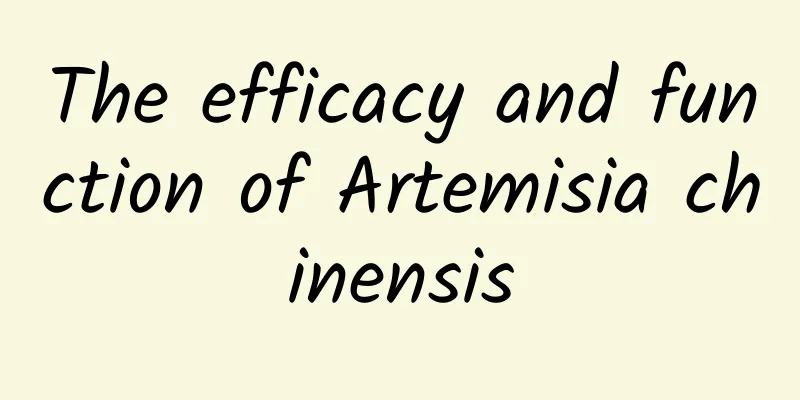The efficacy and function of An (Che Lu) Zi

|
Many people are not very clear about An (艸闾) seeds, so when choosing An (艸闾) seeds, you need to understand them so that you can feel at ease when eating them, which is beneficial for disease treatment. 【English name】 fruit of keiske Wormwood [Source] Medicinal material source: It is the fruit of the plant An (艸闾) of the Asteraceae family. [Original form] An (艸闾), perennial herb, stem height 30-100cm. The main root is obvious, with many lateral roots; the rhizome is short, with a few nutrient branches. The stem is erect, often tufted, pubescent, and often branched above the middle. The lower leaves wither during flowering, the middle leaves are obovate, thrifty to ovate-spatulate, 4-6cm long, 2-4cm wide, obtuse at the apex, gradually narrowed at the base, cuneate, with sparse serrations or shallow lobes on the middle and upward edges; glabrous or slightly hairy above, light in color below, slightly silky; the upper leaves are oblong, slightly toothed or entire. There are many capitulums, arranged in sparse compound racemes on the stem top and branches, up to 40 cm long, with slender pedicels and tiny bracts; the involucre is spherical, 3-3.5 mm wide; the involucral bracts are 3-4 layers, green on the back, with broad membranous edges of the inner layer and no hair; there are 6-10 female flowers; the intermediate bisexual flowers have 13-18 flowers, all of which are tubular and light yellow, and the tips of the style branches of the bisexual flowers are lanceolate and acuminate. Achenes about 2mm long. Flowering and fruiting period is from August to November. [Habitat distribution] Ecological environment: grows on hillsides, roadsides, grasslands, bushes and under sparse woods. 【Nature and flavor】 Spicy; bitter; warm 【Functions and indications】Promote blood circulation and dissipate blood stasis; dispel wind and dampness. Mainly used for amenorrhea caused by blood stasis in women; abdominal pain caused by blood stasis after childbirth; traumatic injury; rheumatic pain [Usage and Dosage] For oral use: decoct in water, 5-10g; or soak in wine; or mash into juice; or make into pills or powder. [Additional prescription] ①For treating women with wind-cold, blood retention and amenorrhea: one catty (liter) of LV seeds, two liang of peach kernels (soaked in water, remove the slope, tip and double kernels), and two liters of hemp kernels. Grind the above-mentioned herbs into powder, put them in another bottle, add two dou of wine, soak them, and seal the bottle. After five days, take three he of warm drink each time, gradually increase to five he, three times a day. (An LVzi wine from Shenghuifang) ② Treat postpartum abdominal pain: An LVzi, peach kernel 2 liang (soaked in soup, peeled, pointed, double kernels, fried with bran until slightly yellow) half a liang each. Grind the above ingredients into powder, mix with refined honey and make pills as big as sycamore seeds. Regardless of time, take 20 pills with hot soup. (An LVzi Pills from Puji Fang) ③ Treat postpartum blood pain: one liang of An LVzi. One liter of water and two cups of boy's urine, boil and drink. (Binghu Ji Jian Fang) ④ Treat women with sudden miscarriage, which starts with a lot and then becomes less, and continues for a long time: 2 liang each of An LV seeds (slightly fried), cooked dried Rehmannia root (roasted), Puhuang (slightly fried), and Angelica sinensis (roasted and fried). Coarsely pound and sieve the above four ingredients. Take three spoonfuls of it each time, add a cup of water, boil it until seven parts are left, remove the residue and drink it while warm, on an empty stomach, at noon, or before going to bed. (An LV drink from "Shengji Zonglu") ⑤ Treat impotence: 2 to 3 grams of An LV seeds. Decoction in water. (Su Yi's "Handbook of Chinese Herbal Medicine") ⑥ Treat falling, sprains, and low back pain caused by stagnation of blood and qi: 0.5 liang of LV seeds, 5 qian each of angelica, clematis, Psoralea corylifolia (fried), Eucommia ulmoides (fried), and cinnamon bark, 2.5 qian each of frankincense and myrrh. Grind the above ingredients into fine powder, cook with wine and make into dough balls as big as sycamore seeds. Take 70 pills each time. Take it with warm wine or salt soup. (LV Pills from Jishengfang) [Discussions by various scholars] 1. "Bencao Jingshu": LVzi is a medicine for promoting blood circulation and dispersing stagnation. It should not be used by women whose menstruation is not on time and who have not been properly examined. Do not try it if you have blood stasis disease and have not been properly examined. 【Excerpt】 Chinese Materia Medica Having said so much, we can see that An (艸闾) Zi still has many functions. It can also be used as medicine to treat diseases. You might as well know more about these, it will be helpful in your life. |
<<: The efficacy and function of Anluzi
>>: The efficacy and function of black tower leaves
Recommend
Dyeing the lake pink! It’s for science…丨Environmental Trumpet
Hello everyone, this is the 18th issue of the Env...
The Fly Restaurant, the Last Bite of Human Life in the Wave of Food Industrialization
Eating has been the eternal pursuit of mankind fo...
Does mugwort have any effect on pregnant women?
Pregnancy is a special period in a woman's li...
The efficacy and function of Jiuniu potato
Traditional Chinese medicine is a Chinese traditi...
Tibetan medicine for gout
The main cause of gout is the long-term high uric...
The efficacy and function of small-leaved golden cuckoo tail grass
As a traditional Chinese medicine, small-leafed g...
World Economic Forum: How are popular destinations around the world coping with overtourism?
Japan blocked a viewing point on Mount Fuji, whil...
A 6.1-magnitude earthquake struck Lushan, Ya'an, Sichuan! Save! An effective guide to escaping and self-rescue in the event of an earthquake
The China Earthquake Networks Center officially d...
Understand in 30 seconds: What happened between Russia and Ukraine?
Mixed Knowledge Specially designed to cure confus...
Vegetables have different colors and different nutrients! Some even have "special nutrients"! The ones you should eat more of are...
Meat is delicious, but without vegetables, you ma...
JD Blackboard: The number of JD 11.11 shopping users will increase by more than 20% year-on-year in 2024
The 2024 Double 11 e-commerce festival has come t...
Thousands of miles of entanglement, secret transmission between stars and earth, and teleportation, this is something Planck never expected...
China has successfully developed the "Jiuzha...
The efficacy and function of Elaeagnus angustifolia flowers
Elaeagnus angustifolia flower is a very common Ch...
The efficacy and function of thatch leaves
Traditional Chinese medicine often has unexpected...
What is Psoralea corylifolia?
Today's living conditions are getting better ...









